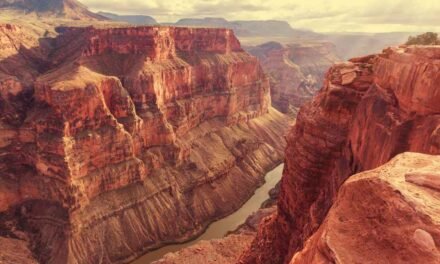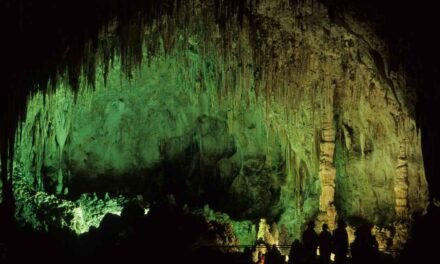Great Sand Dunes National Park, located in southern Colorado, is a unique and awe-inspiring destination that will leave visitors speechless. Home to the tallest sand dunes in North America, this national park offers an unforgettable experience, combining surreal landscapes with outdoor recreational activities. This comprehensive guide will provide an overview of the park and its main features, ensuring you have all the information necessary to make the most of your visit.
Great Sand Dunes National Park Location
Great Sand Dunes National Park is situated in the San Luis Valley of southern Colorado, approximately 230 miles (370 km) south of Denver and 170 miles (274 km) north of Albuquerque, New Mexico. The park is accessible via US Highway 160 and Colorado State Highway 150, which leads directly to the park entrance.
Great Sand Dunes National Park Things to Do
Despite its seemingly barren landscape, Great Sand Dunes National Park offers a variety of recreational activities, catering to visitors of all ages and interests:
Hiking and Backpacking
There are several hiking trails that take you through diverse terrains, including sand dunes, forests, and alpine environments. Popular trails include the High Dune Trail, Medano Pass Primitive Road, Mosca Pass Trail, and Sand Ramp Trail. For overnight backpacking trips, the park requires a free backcountry permit, available at the visitor center.
Sandboarding and Sand Sledding
One of the most popular activities at Great Sand Dunes National Park is sandboarding and sand sledding. Visitors can rent sandboards and sleds from nearby outfitters and slide down the dunes for an exhilarating experience.
Photography and Stargazing
The park’s unique landscapes provide endless opportunities for photography enthusiasts. In addition, the park’s remote location and minimal light pollution make it an ideal spot for stargazing, and it has been designated as an International Dark Sky Park.
Swimming and Splashing
During spring and early summer, Medano Creek flows along the eastern edge of the dunes, offering a refreshing spot for visitors to wade, splash, and relax.
Great Sand Dunes National Park Itineraries
Whether you have a single day or an entire week, there are plenty of ways to explore Great Sand Dunes National Park:
One Day Itinerary
Start your day at the visitor center to get acquainted with the park’s features and pick up any necessary permits. From there, hike the High Dune Trail to enjoy panoramic views of the dune field. Afterward, rent a sandboard or sled and hit the dunes for some thrilling fun. Finish the day with a refreshing dip in Medano Creek and a leisurely stroll along its banks.
Two to Three Day Itinerary
In addition to the activities mentioned in the one-day itinerary, spend a day exploring the park’s more remote areas. Drive the Medano Pass Primitive Road (high-clearance, 4WD vehicle required) or hike the Sand Ramp Trail to experience the park’s diverse landscapes. At night, don’t miss the opportunity to stargaze and marvel at the Milky Way.
Four to Seven Day Itinerary
With more time at your disposal, consider venturing into the park’s backcountry for a multi-day backpacking trip. Explore the alpine environment of the Sangre de Cristo Mountains or the diverse habitats along the Mosca Pass Trail. Be sure to obtain a backcountry permit from the visitor center before embarking on your adventure.
Best Season to Visit Great Sand Dunes National Park
Great Sand Dunes National Park is open year-round, but the best time to visit depends on your preferred activities and tolerance for varying weather conditions:
Spring (April to June)
Spring is a popular time to visit, as the temperatures are mild and Medano Creek is flowing, providing a refreshing spot for wading and splashing. However, afternoon winds can make sandboarding and hiking more challenging.
Summer (July to August)
Summer brings warmer temperatures, making it ideal for swimming in Medano Creek and exploring the higher elevations of the park. However, the sand dunes can become scorching hot during midday, so plan your dune activities for early morning or late afternoon.
Fall (September to October)
Fall offers cooler temperatures and fewer crowds, making it an excellent time for hiking and photography. The changing foliage in the park’s forests adds a touch of color to the landscape.
Winter (November to March)
Winter at Great Sand Dunes National Park is quiet and peaceful, with snow-capped dunes and frozen creek beds. While some activities may be limited, it’s a great time for photography and snowshoeing.
Great Sand Dunes National Park Weather
The weather at Great Sand Dunes National Park can vary greatly depending on the season and time of day. Summer daytime temperatures can reach the 80s°F (27°C), while nighttime temperatures can drop into the 40s°F (4°C). Winter temperatures range from the teens°F (-9°C) to the 40s°F (4°C) during the day, with nighttime lows often dropping below freezing.
Visitors should be prepared for rapidly changing weather conditions, including afternoon thunderstorms in the summer and high winds throughout the year.
Great Sand Dunes National Park Hotels and Camping
There are several lodging and camping options available near Great Sand Dunes National Park:
Hotels and Lodging
While there are no hotels within the park, nearby towns such as Alamosa and Monte Vista offer a variety of accommodations, including hotels, motels, and bed & breakfasts.
Camping
Piñon Flats Campground, located within the park, offers 88 individual sites on a first-come, first-served basis. The campground is open from April to October and features restrooms, potable water, and fire grates. For a more remote camping experience, consider the park’s backcountry sites, which require a free permit from the visitor center.
Great Sand Dunes National Park Restaurants
There are no restaurants within Great Sand Dunes National Park, so visitors should plan to bring their own food and snacks. The nearby towns of Alamosa and Monte Vista offer a variety of dining options, including local restaurants, fast food chains, and grocery stores.
Great Sand Dunes National Park Wildlife and Plants
Despite its seemingly inhospitable environment, the park is home to a diverse array of plants and animals. Visitors may encounter mule deer, elk, pronghorn,
coyotes, and even black bears. The park also supports a variety of bird species, such as the golden eagle, peregrine falcon, and sandhill crane. Small mammals, like kangaroo rats and Ord’s kangaroo rats, are specially adapted to the sandy environment.
Plant life in the park is equally diverse, with species adapted to the various microhabitats created by the dunes, grasslands, forests, and alpine tundra. Some of the plant species you’ll find in the park include Indian ricegrass, scurfpea, sand verbena, and various species of cactus.
Great Sand Dunes National Park History
Great Sand Dunes National Park has a rich and diverse history, with evidence of human presence in the area dating back more than 11,000 years. Early inhabitants included the Paleo-Indians, followed by the Archaic people and later the ancestors of the Pueblo, Ute, and Apache tribes.
The park’s cultural history is also closely tied to the Spanish exploration and settlement of the region in the late 17th and early 18th centuries. As the United States expanded westward, the San Luis Valley became a site of contention between various groups, including the Ute and Apache tribes, the Spanish, and the American settlers.
Throughout the 19th and early 20th centuries, the area now known as Great Sand Dunes National Park experienced a variety of land uses, including farming, ranching, and logging. It wasn’t until 1932 that the Great Sand Dunes National Monument was established to protect the unique dune field and its surrounding ecosystems. In 2004, the monument was redesignated as a national park, further expanding its protections and recognition.
Great Sand Dunes National Park Geology
The geology of Great Sand Dunes National Park is a fascinating story of natural forces at work over millennia. The park’s dunes were formed by a combination of geological processes, including the erosion of the nearby San Juan and Sangre de Cristo mountain ranges, the action of ancient rivers, and the influence of prevailing winds.
As the mountains eroded, sand and sediment were carried by rivers and deposited in the San Luis Valley. Over time, the ancient lakes that once filled the valley began to recede, exposing the sandy deposits. Prevailing winds from the southwest picked up the sand and carried it towards the Sangre de Cristo Mountains, where the wind’s velocity decreased, causing the sand to be deposited at the foot of the mountains.
This process has been ongoing for thousands of years, resulting in the formation of the dune field we see today. The park’s dunes are still evolving, shaped by the constant interplay of wind, water, and sediment.
Conclusion
Great Sand Dunes National Park offers visitors a truly unique and unforgettable experience, combining stunning landscapes with a wealth of recreational opportunities. Whether you’re hiking to the top of a towering dune, sandboarding down its slopes, or exploring the park’s diverse ecosystems, you’ll be amazed by the beauty and wonder of this remarkable destination. With its rich history, fascinating geology, and abundant wildlife, Great Sand Dunes National Park is a must-visit location for anyone seeking a one-of-a-kind adventure in the great outdoors.





